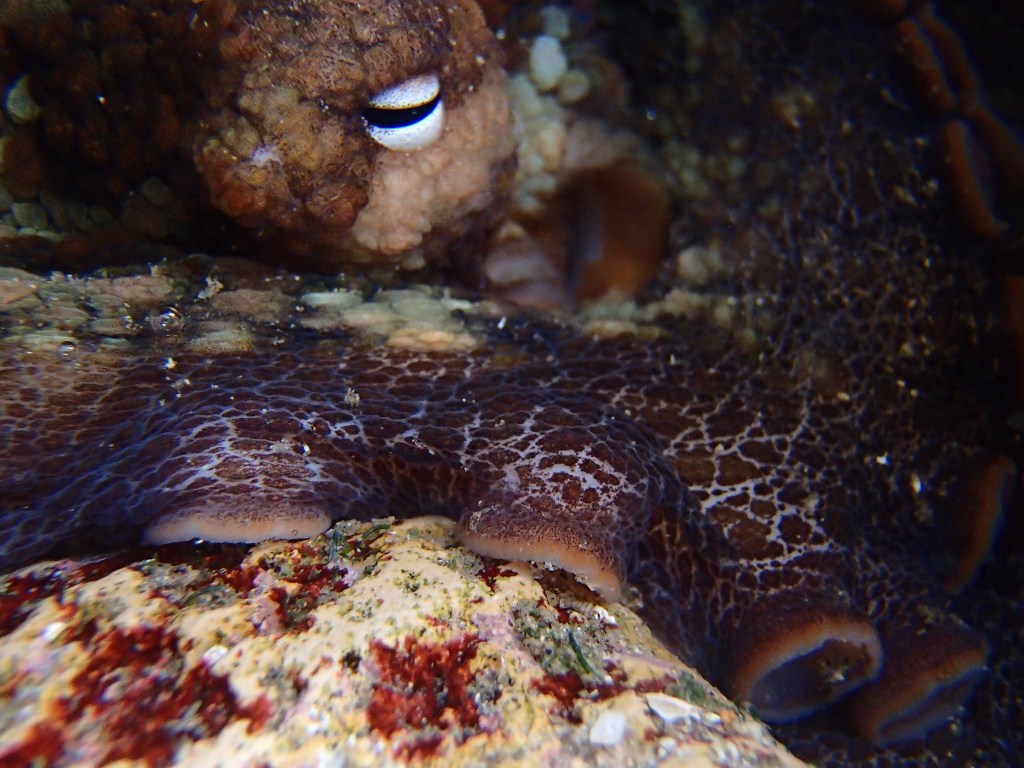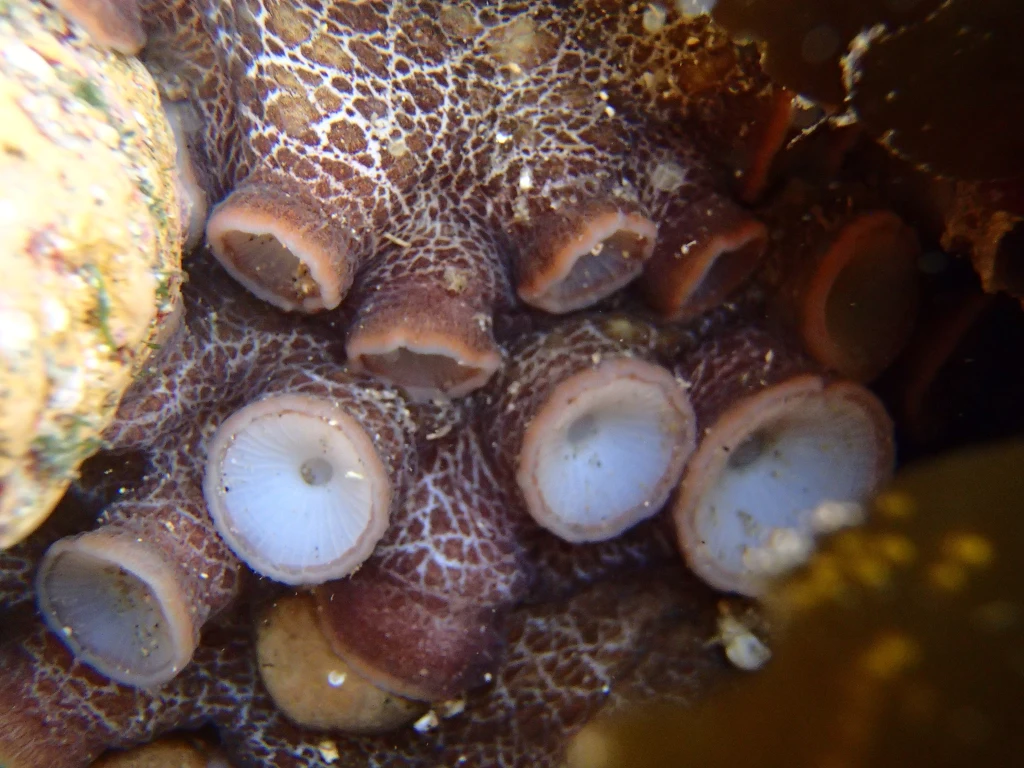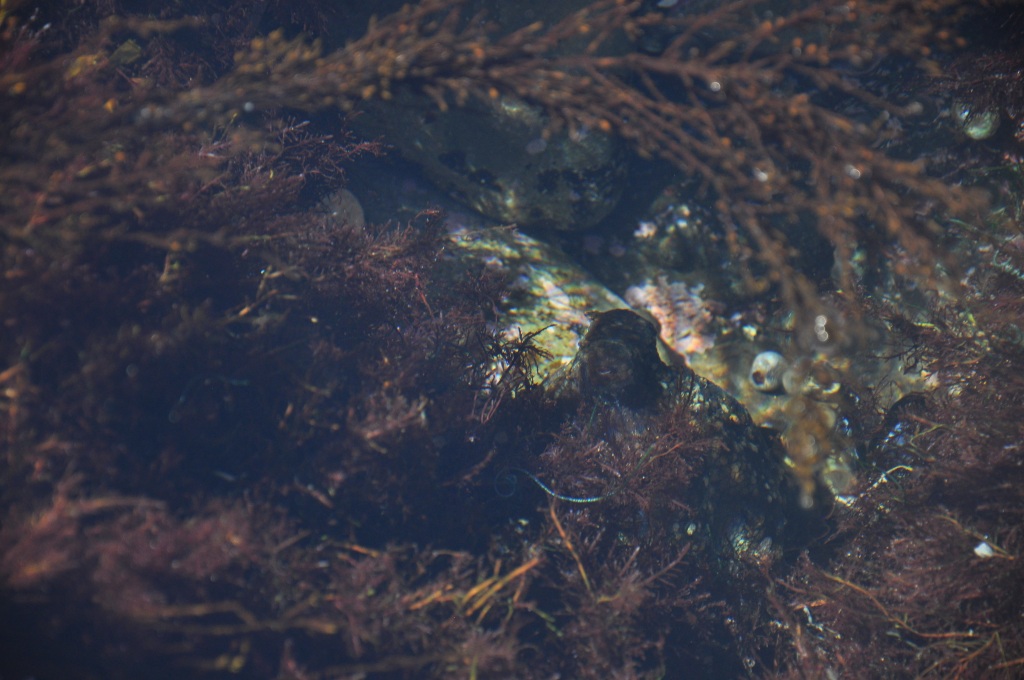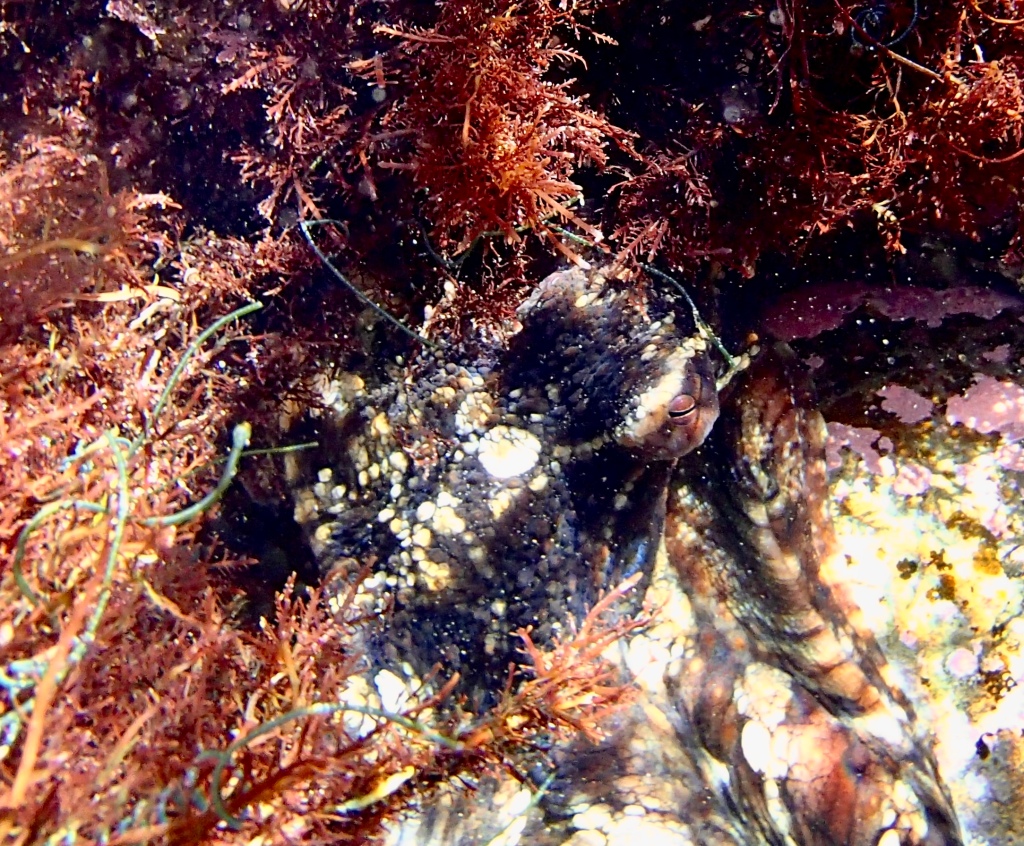5 Steps to Finding an Octopus at the Tide Pools

When I was a kid, finding an octopus at the tide pools was the ultimate victory. This elusive creature is truly a treat to see in the wild. Often argued to be the smartest of all invertebrates, octopi are one of the most fascinating creatures in the ocean and if you’re lucky, you can find one in the tide pools.
If you want to see an octopus in the tide pools but aren’t sure where to start, I’ve got your covered. Here are 5 simple steps to (hopefully) finding an octopus in the tide pools.
- Step 1: Wait for Low Tide
- Step 2: Look for Little “Caves”
- Step 3: Look for Mussel Shells
- Step 4: Lure the Octopus Out with Something Shiny
- Step 5: Be Patient

Do Octopi live in the tide pools?
Octopi can live for a certain amount of time out of the water, and thus smaller individuals often come into the tide pools for various reasons. These might be to catch easy food like mussels that are sessile (do not move) or fish that are trapped in a pool until the tide comes in. A octopus might also make its home in the tide pools to avoid competition with larger individuals in the open water or to get away from predators (like small sharks) that cannot live in the cramped and undulating conditions of the tidal zones.
Although most octopi could travel across the dry rocks to the open water if they wanted, they often simply wait for the tide to return. They are hardy creatures despite their soft bodies, and as I said above, very smart. An octopus will know that you are approaching its rocky hideout merely by your footsteps on the rocks, so you’ll have to be smart to see one of these creatures.
Step 1: Wait for Low Tide
You will need to wait for a good low tide, probably a negative tide, to be able to see one of these creatures.
While many octopi live in the tide pools, they aren’t going to come up into the splash zone. You will need to wait for a good low tide, probably a negative tide, to be able to see one of these creatures. Going at night helps as well, as many octopi are nocturnal.
Again, octopi are very smart and will not let themselves be trapped in a pool that is too small or too far from the refreshing waves. In addition, they won’t visit pools that don’t have any food for them (we’ll get to that in a minute).
Step 2: Look for Little “Caves”
Octopi are elusive creatures. They are famous for changing both the color and texture of their skin to match their surroundings and avoid detection. But hiding under a rock works too!
Especially if you are visiting during the day, an octopus is likely to be hidden under a rock and out of sight. Look for areas in your local tide pools that look like a nice cave where an octopus might make its home.
Even if an octopus is out in the open, you might not see it because of its camouflage. See if you can find the one in the picture below. Once I got close to this animal, it retreated into its cave and out of sight.

Step 3: Look for Mussel Shells
One of octopi’s favorite foods in the tide pools are mussels, the dark, long shelled creatures that attach themselves to rocks. Most predators aren’t strong enough to pull these clam-like creatures off the rocks and crack their shells, but octopi can with their strong arms and hard beaks.
Because of this, a many little “caves” where octopi live are littered with empty mussel shells that are remains the octopus’s latest meal. While not always the case, these shells are great indicator of where to look more closely.
Many little “caves” where octopi live are littered with empty mussel shells that are the remains the octopus’s latest meal.
Step 4: Lure the Octopus Out with Something Shiny
Once you’ve found a possible octopus cave, it’s time to see if there really is an octopus in there. Octopi are incredibly curious creatures and love to explore new things. Shiny objects seem to especially get their attention.
If you have a carabiner or key, get a firm grip and hold it out a little ways from your possible octopus cave. In a minute or two, you might see a tentacle covered in suction cups reaching out to wrap around your object and maybe your hand too!
A word of caution with this step. Octopi are remarkably strong for their size and you will be surprised at how much the animal wants the thing you are holding. Do not let go of it! We want to make sure we are not littering or allowing animals to get ahold of human objects that don’t belong in the ocean. But in case you do panic and let go of the object, be sure not to use anything valuable like jewelry to entice your octopus friend.
Once a tentacle has come out, you can often peer under the rock to see the rest of the creature. I once was taking pictures of an octopus under a rock when it decided it wanted my camera and fought me hard for it. Of course, you are stronger than it, but it can be a reflex reaction to let go of the object.

Step 5: Be Patient
Once again, octopi are smart. They know you want them to come out and they have all the time in the world to wait for you to go away. If you know an octopus is under your rock, you may have to wait— quiet and still— for the creature to realize you mean it no harm. Most octopi are curious but not when they perceive danger. Be patient and respectful of these creatures whose territory you are entering as a visitor.
Of course, these steps aren’t foolproof. Sometimes there are simply no octopi in the area or maybe they are all too shy to come out. On the other hand, I’ve known some octopi to be completely out in the open, crawling across rocks for all to see. If you’re struggling to find one of these creatures, check iNaturalist to see what tide pools they have been spotted at in your area or ask someone you see at the tide pools for tips!

Categories
tags
Subscribe to the blog
Sign up to receive weekly emails with tide pooling information and guides so you never miss a post!

Leave a comment